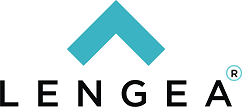On January 1, 2025, New York became the first state in the nation to mandate paid prenatal leave for private-sector employees. Under this new law, employers must provide 20 hours of fully paid leave for pregnancy-related medical appointments and treatments.
This groundbreaking legislation is expected to serve as a model for other states considering similar protections, reinforcing New York’s reputation as a leader in employee rights and workplace benefits. For businesses, this law introduces new compliance requirements, while employees gain greater flexibility and financial support during pregnancy. We’ll break down who qualifies, how the leave can be used, and what employers need to do to prepare.
Who Qualifies for New York’s Paid Prenatal Leave?
This law applies to all private-sector employees working in New York, regardless of:
- Job classification (full-time, part-time, or temporary workers are all covered).
- Industry or occupation (this law applies across all sectors).
- Immigration status (all employees are entitled to the leave, regardless of work authorization).
Employers covered under this law include corporations, limited liability companies (LLCs), sole proprietors, and any other private business entity operating in New York.
It is important to note that only the pregnant employee is eligible for this leave. Spouses, partners, and family members cannot take advantage of this benefit to attend pregnancy-related appointments. Those seeking time off to support a pregnant loved one may have other options, such as New York Paid Family Leave (NY PFL) or Paid Sick Leave.
How Can Employees Use Paid Prenatal Leave?
Employees are entitled to 20 hours of paid leave to attend pregnancy-related healthcare appointments, which may include:
- Consultations with doctors or midwives about prenatal care and safe delivery.
- Physical exams and routine checkups during pregnancy.
- Fertility treatments for employees undergoing reproductive assistance.
- Pregnancy monitoring, ultrasounds, and screenings.
- Medical testing, including genetic screenings, glucose-tolerance tests, and other diagnostics.
- Postnatal medical care after delivery.
This leave must be provided without deductions from other forms of paid leave, meaning employees can take prenatal leave without it affecting their sick leave, vacation time, or paid family leave.
Employees do not need to use all 20 hours at once. They may take leave in hourly increments as needed. For example, an employee can use one hour for a doctor’s visit and return to work afterward, preserving the remaining hours for future appointments.
How Does This Law Interact with Existing Leave Policies?
New York’s paid prenatal leave is a standalone benefit and does not replace or reduce an employee’s right to take other forms of leave. Employers cannot deny or discourage employees from using this leave, nor can they require employees to exhaust other leave options first. Employees may also combine their paid prenatal leave with New York Paid Sick Leave or NY PFL, provided they meet the requirements for those programs.
Employers should review their current policies and ensure compliance to avoid legal risks, as failure to provide this leave could lead to penalties or legal action.
Key Considerations for Employers and Employees
Any private-sector employer with at least one employee in New York must provide paid prenatal leave. Employers headquartered outside New York must still comply if they have at least one New York-based employee.
No Minimum Work Requirement
There is no waiting period for eligibility. Employees can access paid prenatal leave immediately upon hire, and the 20-hour entitlement is available over a rolling 12-month period. If an employee takes their first prenatal leave hour on March 1, 2025, they have until March 1, 2026, to use the remaining hours. Unused hours do not carry over. Once the 12-month period ends, the employee must wait until a new pregnancy qualifies them for additional leave.
Employers must maintain records documenting leave requests and usage, though they cannot ask for medical details related to an employee’s appointments.
Privacy Protections
- Employees do not need to disclose the reason for their leave beyond confirming it is for pregnancy-related medical care.
- Employers cannot request medical records, diagnoses, or personal health details.
Compensation Requirements
Employees must be paid their regular hourly wage or the state minimum wage, whichever is higher. If an employee becomes pregnant more than once in a 12-month period, they can use their remaining leave, but total usage cannot exceed 20 hours per year.
How Does Paid Prenatal Leave Compare to Other Leave Programs?
New York has multiple paid leave policies that benefit employees. Here’s how paid prenatal leave compares to other programs:
| Leave Type | Purpose | Duration | Who Pays? |
| Paid Prenatal Leave | Pregnancy-related medical appointments | 20 hours | Employer |
| Paid Sick Leave | Personal or family medical needs | Up to 56 hours (based on employer size) | Employer |
| Paid Family Leave (NY PFL) | Bonding with a new child, caring for a sick family member | Up to 12 weeks | Employee-funded via payroll deductions |
Understanding how these benefits interact is key for both employees and employers, ensuring proper use of each type of leave.
What Should Employers Do Now?
With this law taking effect soon, New York employers should take proactive steps to ensure compliance. Here’s what businesses need to do:
- Update Employee Handbooks & Policies: Ensure company policies reflect the new paid prenatal leave requirements.
- Train HR & Management: Educate teams on employee rights, leave procedures, and compliance requirements.
- Adjust Payroll & Time-Tracking Systems: Implement processes to correctly calculate and track paid prenatal leave usage.
- Ensure Proper Recordkeeping: Maintain accurate records of leave requests while respecting employee privacy.
Failing to comply with this new law could result in legal penalties and financial liabilities, so employers should act now to avoid complications when the law takes effect.
A Step Toward Expanding Employee Benefits
New York’s paid prenatal leave law marks a significant step in expanding workplace protections for pregnant employees. By providing paid leave for essential medical care, the law helps ensure better health outcomes for both employees and their children while setting a new standard for other states to follow.
For employers, this change introduces new compliance requirements but also presents an opportunity to enhance workplace benefits and demonstrate commitment to employee wellbeing.
Lengea Can Help
At Lengea Law, we help businesses navigate evolving labor laws and ensure compliance with state regulations. If you have questions about how this law affects your business or need assistance updating your policies, contact us today.


